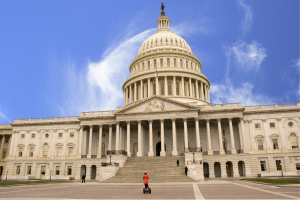If you and your family celebrate the holidays do you put up a tree? Are you more traditional, and as such chop down your own tree, do you buy a pre-cut tree, or do you put up a plastic Christmas tree?
If you are planning on cutting down your own tree this season, there are things you should know. In recent years there have been Christmas tree shortages. For example, phytophthora root rot is a common disease found in Christmas trees that can cause severe loss in Christmas tree production. This disease has caused problems with production in several states in previous years. There are also increasing fears of a Christmas tree shortage this upcoming holiday season due to weather conditions. For instance, a severe drought in the Northeast has caused a reported loss of twenty-five percent of this year’s young Christmas trees. (Baehr, 3).
Another potential worry with Christmas trees is ‘Christmas Tree Syndrome.’ An estimated thirteen percent of the population experiences sneezing, congestion, watery eyes, and more symptoms due to allergic reactions. Studies have shown that mold, pesticides, and varying types of pollen in real Christmas trees are the most likely cause of the reactions. However, asthma flare ups and allergy episodes can also be caused by plastic Christmas trees. This is because they can gather dust from being in storage for long periods of time. Ways to prevent Christmas Tree Syndrome can include: letting both real and artificial trees air out before setting them up inside, wiping down artificial trees after putting them up, spraying real trees with half water, half vinegar solutions to help cut down on mold, waiting until later in the holiday season to put up a real tree, and only leaving it up for a short period of time.
When purchasing a Christmas tree this year you may also want to consider the environmental effects. Artificial Christmas trees cannot be recycled and are non-biodegradable. Materials such as plastics and metals are also depleted to create artificial trees. Due to this you will have to use your artificial tree for an estimated twelve years to offset the environmental costs (Lee, 3). This can also become an environmental issue when major companies and corporations all over the world buy new artificial Christmas trees every year. In comparison, real Christmas trees are biodegradable, and benefit their surrounding ecosystem prior to being cut down. Prior to being cut down they provide shelter for animals, help with flooding, and filter the carbon dioxide in the air. However, the consumerism of real Christmas trees may potentially offset the benefits. It is estimated that 30 million real Christmas trees are sold in the United States each year. It is impractical to grow millions of trees just for them to be cut down in their teenage years before they can reach full maturity, and to waste resources and potentially harm the environment through the use of pesticides trying to sustain the Christmas tree market. Additionally, the methods in which real trees are disposed of, such as the landfill and bonfires, are harmful to the environment and release more carbon dioxide into the atmosphere.
With all of this being said, if you are planning on putting up a Christmas tree this year, you should choose the tree that is best suited for you and your family. For instance, you may want to keep your allergies in mind when choosing a tree. And, while there are environmental effects for both artificial and real trees, they can be somewhat avoided. It may be cheaper to purchase one artificial tree and use it for the rest of your life, or maybe you prefer buying a real Christmas tree and recycling it back to tree farms after the holiday’s.
Works Cited
Baehr, Jasmine. “Christmas Tree Shortage Projected from Severe Northeast Drought: ‘We Can’t Grow Anything.'” Fox Business, 16 Nov. 2024, www.foxbusiness.com/lifestyle/christmas-tree-shortage-projected-severe-northeast-drought-we-cant-grow-anything.
Lee, Marvin. “Real vs Fake Christmas Tree: Which One Is Better for the Environment?” Earth.org, 14 Dec. 2023, earth.org/real-vs-fake-christmas-tree-environmental-impact/#:~:text=Real%20Christmas%20trees%20have%20an,to%2016kg%20of%20carbon%20dioxide.






































